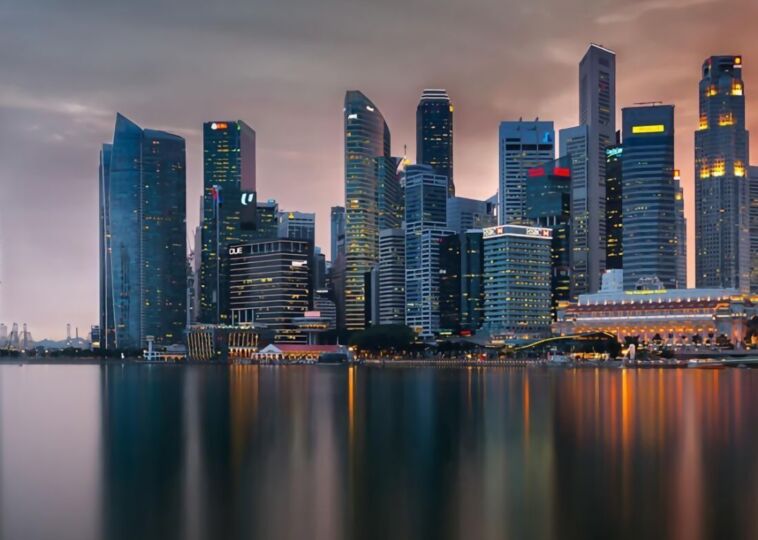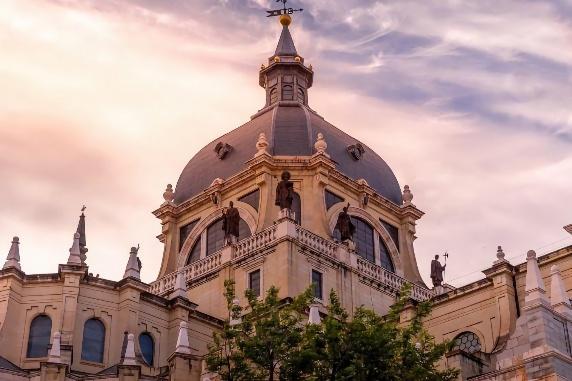Epic City Skylines You Must See to Believe: Start Your Journey

Contents [hide]
The world’s most iconic skylines are more than just a collection of buildings; they’re a dazzling display of human creativity and ambition woven into the fabric of our modern cities. From shimmering glass towers to historic landmarks, each skyline tells a unique story, offering a visual feast for the eyes and a peek into the soul of a city.
Skylines aren’t just about tall buildings but about the artistry of urban planning and the spirit of innovation. Whether it’s the sleek silhouette of a futuristic city or the charming array of historic structures, an incredible skyline captures the essence of a place impressively and intimately.
Historic Center, Rome

Rome’s skyline is unlike any other planet, starkly contrasting to the towering skyscrapers that dominate modern cities. Instead of glittering glass and steel reaching for the heavens, Rome’s horizon is defined by a mosaic of ancient domes, terracotta rooftops, and stately campaniles.
This classically Italian panorama is not just a skyline; it’s a visual journey through history, culture, and architectural mastery. What makes Rome’s skyline so unique? For one, it’s the commitment to preserving its historic charm. Peter’s Basilica, the crowning jewel of Rome’s skyline. This rule keeps the cityscape low and harmonious, allowing Rome’s ancient architecture to take center stage.
Unlike cities where skyscrapers compete for attention, Rome’s skyline feels like a carefully curated art piece, where each element contributes to the whole. Rome’s skyline isn’t about height but depth.
The warm hues of terracotta tiles, the boxy bell towers, the campaniles that punctuate the skyline, and the lofty statues that seem to watch over the city are the elements that make Rome’s skyline not just beautiful but profoundly evocative.
Xinyi Special District, Taipei

The city’s skyline is a testament to architectural innovation and breathtaking beauty. Among the glistening towers and high-rises, a few standout landmarks capture the essence of Taipei’s skyline with unparalleled grandeur. At the heart of Taipei’s skyline is the Taipei 101 skyscraper, a true icon that once held the world’s tallest building title.
Soaring a magnificent height of 1,671 feet, Taipei 101 isn’t just tall; it symbolizes Taipei’s ambition and modernity. This colossal structure dominated the skyline and set a record with its elevator system, which whisks visitors from the fifth floor to the 89th in just 37 seconds.
Standing atop Taipei 101, you get an eagle’s view of the city that’s nothing short of awe-inspiring. Just a stone’s throw away, the Taipei Nan Shan Plaza adds flair to the cityscape. Its top-floor gem, Saffron 46, is not just a dining destination; it’s an experience.
While the Indian cuisine here is mouthwatering, the real treat is the panoramic view of Taipei 101 and the city beyond. Dining here offers a dual delight: savoring exquisite dishes while soaking in one of Taipei’s most impressive vistas.
San Francisco

San Francisco, a city known for its picturesque charm and unique character, has a skyline that’s as distinctive as its iconic Golden Gate Bridge. At the heart of San Francisco’s skyline stands the Transamerica Pyramid, an emblematic building synonymous with the city itself.
Completed in 1972, this futuristic, triangle-topped marvel was once the world’s eighth-tallest building, reaching 853 feet.
The pyramid’s design was not just a bold aesthetic choice but also a pragmatic one, as its narrow base and tapering shape were meant to withstand the seismic activity of the San Andreas Fault, a constant reminder of the city’s location on one of the world’s most active fault lines. However, the skyline didn’t stop evolving with the Transamerica Pyramid.
Completed in 2018, this gleaming skyscraper reaches just under 1,000 feet, surpassing the Transamerica Pyramid to become the tallest building in the city. The Salesforce Tower isn’t just a height record-holder; it represents a leap forward in seismic design and technological innovation.
Singapore

Singapore’s skyline is nothing short of a modern marvel. A skyline that’s both striking and innovative, capturing the essence of Singapore’s architectural prowess. At the heart of this skyline is the illustrious Marina Bay Sands. With a jaw-dropping price tag of $5.7 billion, this colossal structure is the world’s most expensive building and a crown jewel in Singapore’s architectural landscape.
Designed by the renowned architect Moshe Safdie, Marina Bay Sands isn’t just a building; it’s a skyline unto itself. Its three soaring towers, topped with the iconic SkyPark, create a visual spectacle that’s both futuristic and awe-inspiring. But Marina Bay Sands is just the beginning. This cultural landmark enhances Singapore’s skyline with its bold, unconventional form.
Shinjuku City, Tokyo

And while the Tokyo skyline is already impressive, the view from Shinjuku truly takes the cake. At the heart of this skyline is the Tokyo Skytree, soaring 2,080 feet into the sky. As the world’s second-tallest structure, the Skytree isn’t just a feat of engineering; it’s a futuristic marvel that redefines Tokyo’s silhouette.
Inspired by traditional Japanese pagodas, its design creates a striking contrast against the city’s modern high-rises. For those brave enough to venture to the Tembo Galleria observation deck, the view is nothing short of breathtaking, offering a bird’s-eye perspective that feels almost otherworldly. But the Skytree isn’t the only star in Shinjuku’s skyline.
With its red and white latticework, the Tokyo Tower stands proudly as a Japanese twist on the Eiffel Tower. Its vibrant colors and classic design make it stand out amidst the city’s skyscrapers. It’s a visual treat that splashes European charm to Tokyo’s modern skyline.
For an unparalleled view, go to the Bunko Civic Center Observation Lounge. Here, on a clear day, you can take in a sweeping panorama that stretches from the towering Skytree and the urban sprawl of Shinjuku to the majestic presence of Mount Fuji in the distance.
Downtown, Seattle

Seattle’s skyline is a mesmerizing blend of architectural marvels and natural beauty, often hailed as one of the most striking cityscapes in the USA and the world. Nestled among the rolling hills, this skyline features an eclectic mix of buildings that stand out for their unique designs and historical significance. Seattle’s downtown skyline is an architectural feast for the eyes.
The city’s skyline is defined not only by its iconic structures and strategic layout, which allows each building to shine against the backdrop of Puget Sound and the majestic Mount Rainier. One of the city’s most prominent features is the Space Needle, an enduring symbol of Seattle since its creation for the 1962 World’s Fair.
Seattle’s approach to urban development has been influenced by its neighboring city, Vancouver. Tower-spacing regulations have been implemented to prevent the over-saturation of skyscrapers in the downtown area, preserving the city’s unique skyline. This thoughtful regulation has led to a skyline that is as diverse as it is aesthetically pleasing.
The Columbia Center, built in 1895, remains Seattle’s tallest building at 933 feet. Despite being an older structure, its robust presence continues to dominate the city’s skyline, symbolizing its historical growth and architectural heritage. As one of the fastest-growing cities, Seattle’s skyline will undoubtedly evolve.


